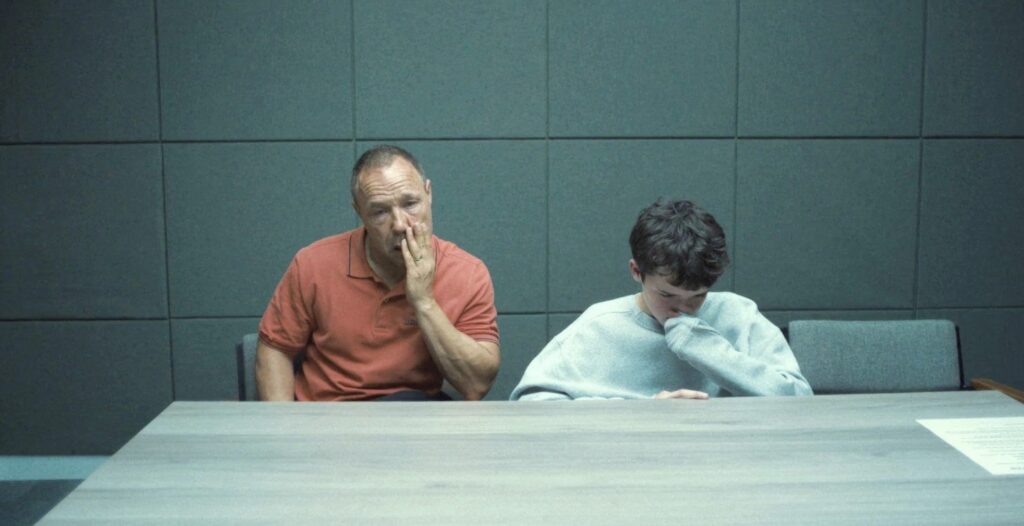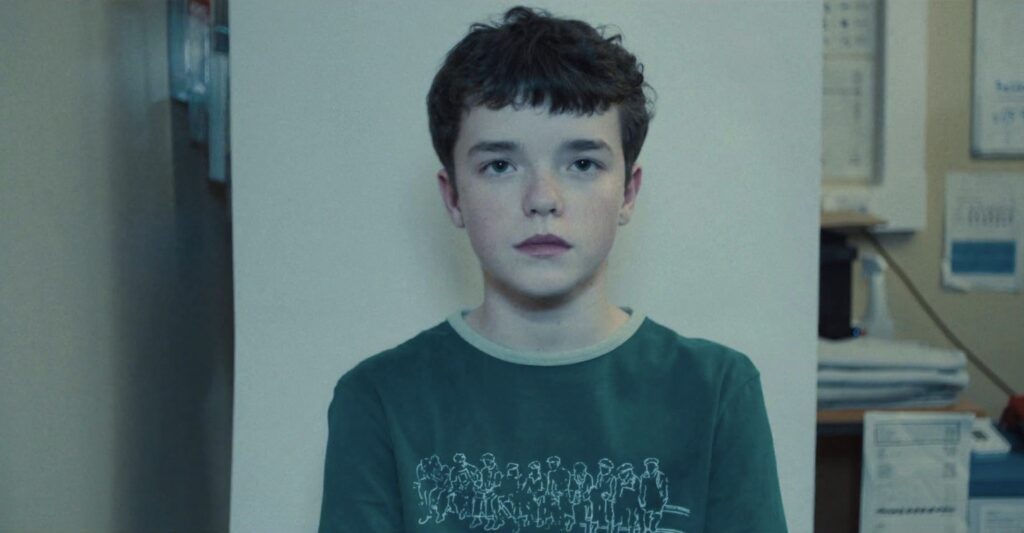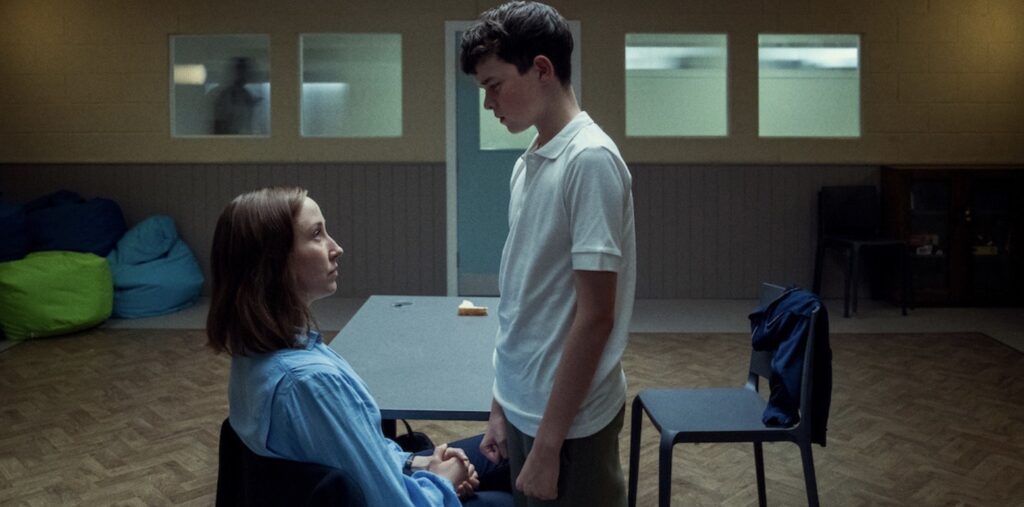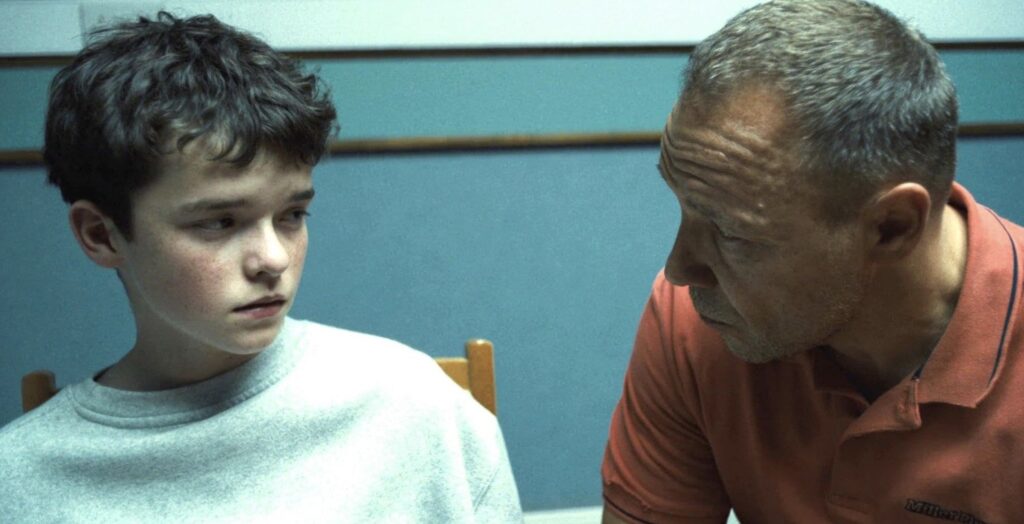
Adolescence: Tragedy, Art, and the Manosphere
Written by Valeria Berghinz
Edited by Lily-Rose Morris-Zumin
It has been over a month since Adolescence hit Netflix, but the enthusiastic response from viewers and critics alike is yet to slow down. Within its first week, the series became the most streamed television program in the UK, with Prime Minister Keir Starmer praising it in Parliament and supporting the idea of it being shown across schools. The acclaim has since spread internationally, positioning Adolescence as an essential, urgent watch for audiences of all ages.
It’s not difficult to understand why the series has struck such a profound chord. On a technical level, it’s a marvel: its four hour-long episodes are filmed in a single take, a complicated approach that elevates the already powerful performances of its cast. While the single take could be dismissed as gimmicky, Adolescence employs it to profound effect, underscoring the reality of its heavy subject matter and creating an unrelenting, suffocating television experience.
The series opens with police raiding the home of 13-year-old Jamie Miller (Owen Cooper), arresting him at gunpoint. We then follow Jamie through the harrowing process of his arrest and interrogation, accompanied through it by his devastated father (Stephen Graham). We learn that he is accused of the violent and fatal stabbing of his classmate, Katie Leonard. With CCTV footage confirming his guilt, the show doesn’t focus on whether Jamie committed the crime but instead seeks to unravel why.
From there, each episode jumps in time as it confronts different facets of Jamie’s social and institutional life. In the second episode, officers Luke Bascombe (Ashley Walters) and Misha Frank (Faye Marsay) investigate Jamie’s chaotic school, an overwhelming environment of shouting students and disengaged teachers. The third episode narrows the focus to a tense, claustrophobic interview between Jamie and forensic psychologist Briony Ariston (Erin Doherty), unravelling the toxic forces of online radicalization and fractured social dynamics that led to Katie’s murder. Finally, the fourth episode shifts to Jamie’s family, capturing their emotional devastation as they await his trial.

Outside of its technical and artistic achievements, Adolescence has been, above all, lauded as an essential and urgent watch. Creators Jack Thorne and Stephen Graham wanted to respond to several instances of violence against young girls by young boys, interrogating the digital world’s pervasive influence on children and our inability to control it. The real-time effect of the show’s single-take episodes underlines this theme by presenting viewers with a sense of visual reality and demonstrating the inadequacy of this surveillance.
This theme is particularly striking in the second episode, where the school investigation unfolds. In this chaotic environment, the camera’s movement does not fictionalise itself by focusing on important action, instead leaving audiences to absorb the entire scene. While viewers may be inclined to focus on the screaming students or the ebb and flow of classroom traffic, the periphery reveals a more complex truth – students glued to their phones, where an entire universe is unfolding.
At its core, Adolescence explores how ill-equipped society is to manage this concealed digital landscape whilst challenging our current protective measures. Should a psychologist be allowed to ask Jamie about his sexual fantasies? Are we crossing a line by strip-searching a child? There is a delicate balance required to safeguard young people from trauma, a balance society has refined over decades. Yet, the series pushes viewers to confront whether these protective protocols align with the realities of today’s youth. During his evaluation, Jamie asks the psychologist whether her sexually charged interrogation is permissible, only to later admit to having seen topless photos of Katie, circulated un-consensually around the school.

This disparity returns in the final episode, where Jamie’s father talks about his own abusive childhood and his promise to never subject his own children to the same treatment. He succeeds in breaking the cycle of abuse, becoming a good, albeit imperfect, father and husband. But his efforts do not prevent Jamie from falling into the grip of harmful online ideologies, revealing how drastically the landscape of parenting has shifted. Christine Tremaco, portraying Jamie’s mother, poignantly reflects: “He never left his room. He’d come home, slam the door, straight up the stairs on the computer”. The home, once symbolized safety, has been upended by the pervasive influence of the online world. In this reality, harmful content spreads unchecked, and radicalization can occur with startling speed. Jamie’s father captures this troubling shift in one moment of reflection: “Look at that fella that popped up on my phone, going on about how to treat women, how men should be men, and all that shit. I was only looking for something for the gym, weren’t I?”
The question of Adolescence’s utility – beyond just being good art – has taken a central role in recent discourse. Perhaps it will be shown to children, at school or otherwise, as a cautionary tale against troubling social media engagement. However, the show’s message to parents and responsible adults is equally, if not more, urgent. The online world has never been a safe one, with cyberbullying and grooming having long been recognised as threats to be managed. But the power of radicalisation, its pervasive access to all corners of the internet and its users, is a threat we must be able to name before we can tackle it.

Currently, our collective descent into the darker corners of social media feels alarmingly inevitable. Media magnates like Elon Musk openly engage with right-wing content linked to the manosphere, while the much-discussed Andrew Tate, detained on charges of sex trafficking and rape in Romania, secures his freedom on American soil with support from the Trump administration. Simultaneously, the rapid advancement of technology poses even graver threats. AI platforms capable of generating pornographic images from real photographs have already contributed to tragic outcomes, such as the suicide of a 14-year-old girl in the UK. In parallel, platforms like Telegram host sprawling group chats dedicated to sharing revenge porn and inciting further violence. Even as we grasp to understand and control the world of social media, it propels itself forward.
Actions can and must be taken, though they will undoubtedly involve a period of trial and error. Australia, for instance, has taken a bold step by enacting a law that prohibits children under 16 from using social media, which may serve as a model or a starting point for further solutions. But it is clear that a singular approach may not suffice. What is certain, however, is the urgent need for collective involvement, at the risk of losing our children at more alarming, drastic rates.
